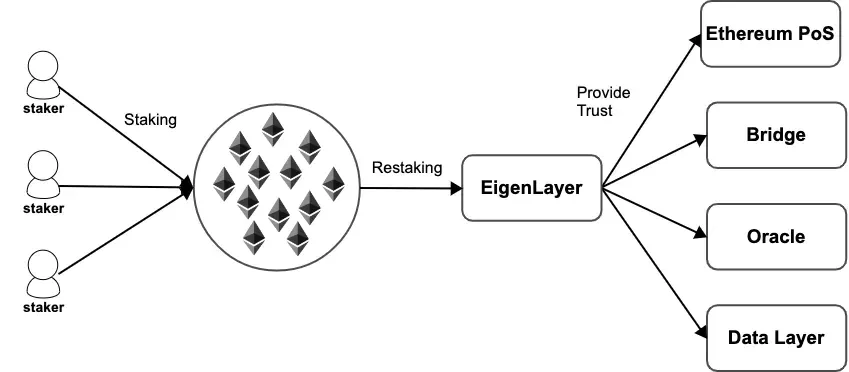What Is Restaking and Why Everyone’s Talking About It
- Bitcoinsguide.org

- Jul 29
- 2 min read
Context & Overview of Restaking
In 2024 the term restaking vaulted from niche developer chats into every crypto investor’s timeline.
Promising higher yields and stronger blockchain security without surrendering staking rewards, restaking feels like free alpha—but only if you understand how it works and the risks hidden beneath the hype.
This guide breaks down restaking in plain English, shows why protocols like EigenLayer sparked a gold-rush, and helps you decide whether leveraging your staked assets is worth it.

Key Takeaways
Restaking re-uses existing staked tokens—usually ETH—to secure additional networks or middleware.
You can earn extra yield on top of normal staking rewards, but you also inherit extra slashing risk.
Early movers (EigenLayer, Karak, Omni) battle for dominance; standards are still evolving.
DYOR is critical: protocol design, insurance pools, and withdrawal mechanics differ widely.
1. Staking vs. Restaking: Quick Refresher
Concept | Staking | Restaking |
What you do | Lock tokens to secure one network | Re-pledge already-staked tokens to secure multiple services |
Rewards | Native block rewards + fees | Original rewards plus extra yield from new service |
Risks | Slashing for downtime/validator faults | All staking risks plus extra slashing conditions from each added service |
2. How Restaking Works Under the Hood
Stake Once – delegate 32 ETH (or liquid-staked ETH) to a validator.
Opt-In to a Restaking Protocol – deposit validator credentials or LSTs into a restaking contract.
Secure Additional Modules – middleware taps your stake for security and pays extra rewards.
Earn & Rebalance – collect dual yields; withdrawals require every module’s clearance.
3. Why Is Everyone Excited?
3.1 Capital Efficiency
3.2 Shared Security Flywheel
3.3 Composability
4. The Major Players to Watch
Protocol | Stage | Assets | Angle |
EigenLayer | Mainnet (phase-in) | ETH, stETH, rETH, cbETH | Modular AVSs |
Karak | Testnet | ETH + multichain | Cross-chain restaking |
Omni | Testnet | ETH | Cross-rollup security |
Symbiotic | Early | BTC, ETH | Heterogeneous chains |
5. Risks You Can’t Ignore
Compounded Slashing
Smart-Contract Bugs
Liquidity Delays
Governance Uncertainty
Regulatory Gray Zone
6. Due-Diligence Checklist Before You Restake
Slashing coverage?
AVS track record?
Reward tokenomics?
Exit mechanics?
Validator alignment?
7. Step-by-Step: Restaking with EigenLayer (Example)
Connect wallet.
Select AVSs.
Review slashing terms.
Confirm deposit.
Monitor dashboard.

Will Restaking be the new norm?
8. Outlook: Will Restaking Become the New Normal?
Restaking unlocks impressive capital efficiency and network effects, but it isn’t a free lunch.
Extra yield comes with stacked risks that only sophisticated stakers should stomach—at least until standards mature.
If you dive in, start small, read every slashing clause, and treat restaked ETH like leveraged collateral: high reward, high responsibility.
Sign up at Bitcoinsguide to stay ahead of every staking trend.



Comments